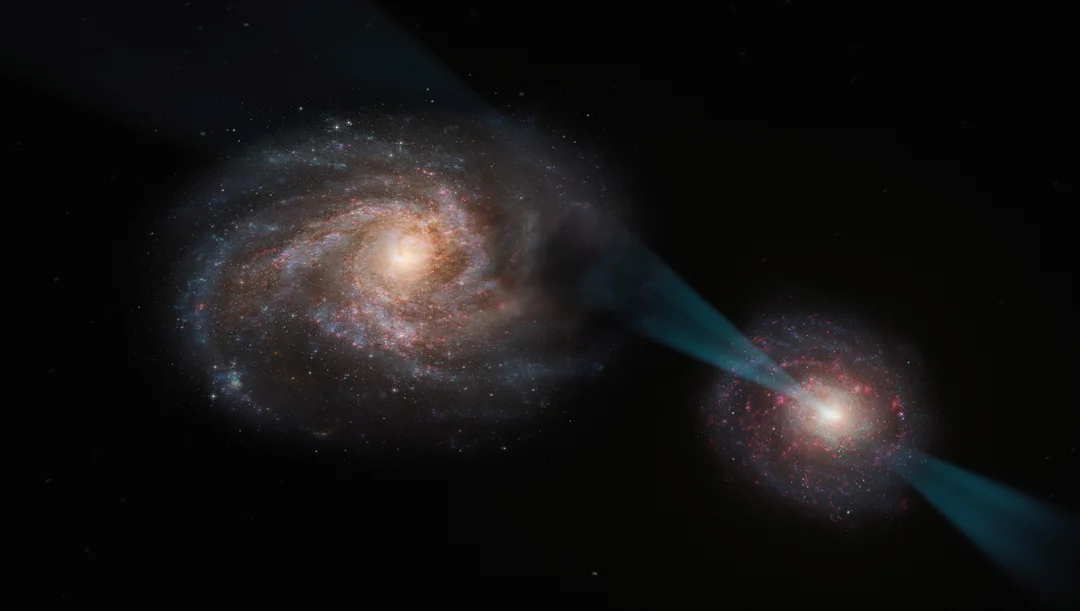
Cosmic Joust: Black Hole’s Radiation Spears Galaxy in Unprecedented Collision
In a groundbreaking observation, astronomers have witnessed a galactic merger unlike any seen before: one galaxy spearing another with a powerful beam of radiation emanating from its central black hole. This 'cosmic joust', as the research team has dubbed it, reveals the devastating impact of a quasar on a neighboring galaxy, effectively halting its star formation.

The research, published in Nature, details how the radiation emitted by the supermassive black hole (a quasar) in one galaxy disrupts the gas clouds in the other. These clouds are the nurseries of new stars, and the quasar's radiation essentially sterilizes them, preventing star formation.
"Here we see for the first time the effect of a quasar's radiation directly on the internal structure of the gas in an otherwise regular galaxy," explained astronomer Sergei Balashev of the Ioffe Institute in Russia, who co-led the research with Pasquier Noterdaeme of the Institut d'Astrophysique de Paris in France. The **gravitational interaction** between both galaxies reminds the researchers of medieval joust.
Galactic collisions are common in the universe, playing a crucial role in the growth and evolution of galaxies and their central black holes. Galaxies are often drawn together by gravity, pulled into clusters where they merge together to form larger galaxies. During the swooping stage of galaxy collision, one of the galaxies becomes a quasar when their supermassive black hole begins drawing great amounts of surrounding material at a tremendous rate.
In this 'cosmic joust', the quasar is observed blasting jets of material into its sparring partner at speeds of around 500 kilometers (310 miles) per second. This barrage disrupts the dust and gas clouds, leaving very little behind for new stars to form.

Adding insult to injury, some of the 'wounded' galaxy's gas is also pulled into the quasar galaxy, fueling the black hole's activity even further. However, the quasar's own galaxy isn't immune to the effects of its black hole. As the black hole consumes material, it emits powerful winds that push away and clear its own galaxy's star-forming material.
Despite the damage, galaxy collisions can also spark new life. When galaxies collide, their gas reserves collide, creating regions of over-density that can lead to the birth of new stars. Sometimes, disruption is needed to ignite a new stage of life, even for the galaxies in the younger years of the Universe.
This unique observation offers valuable insights into the complex interplay between galaxies and their supermassive black holes, shedding light on the processes that shape the evolution of the universe. Will future observations reveal more such 'cosmic jousts' and further refine our understanding of galactic evolution?
What are your thoughts on this discovery? Share your insights and theories in the comments below!